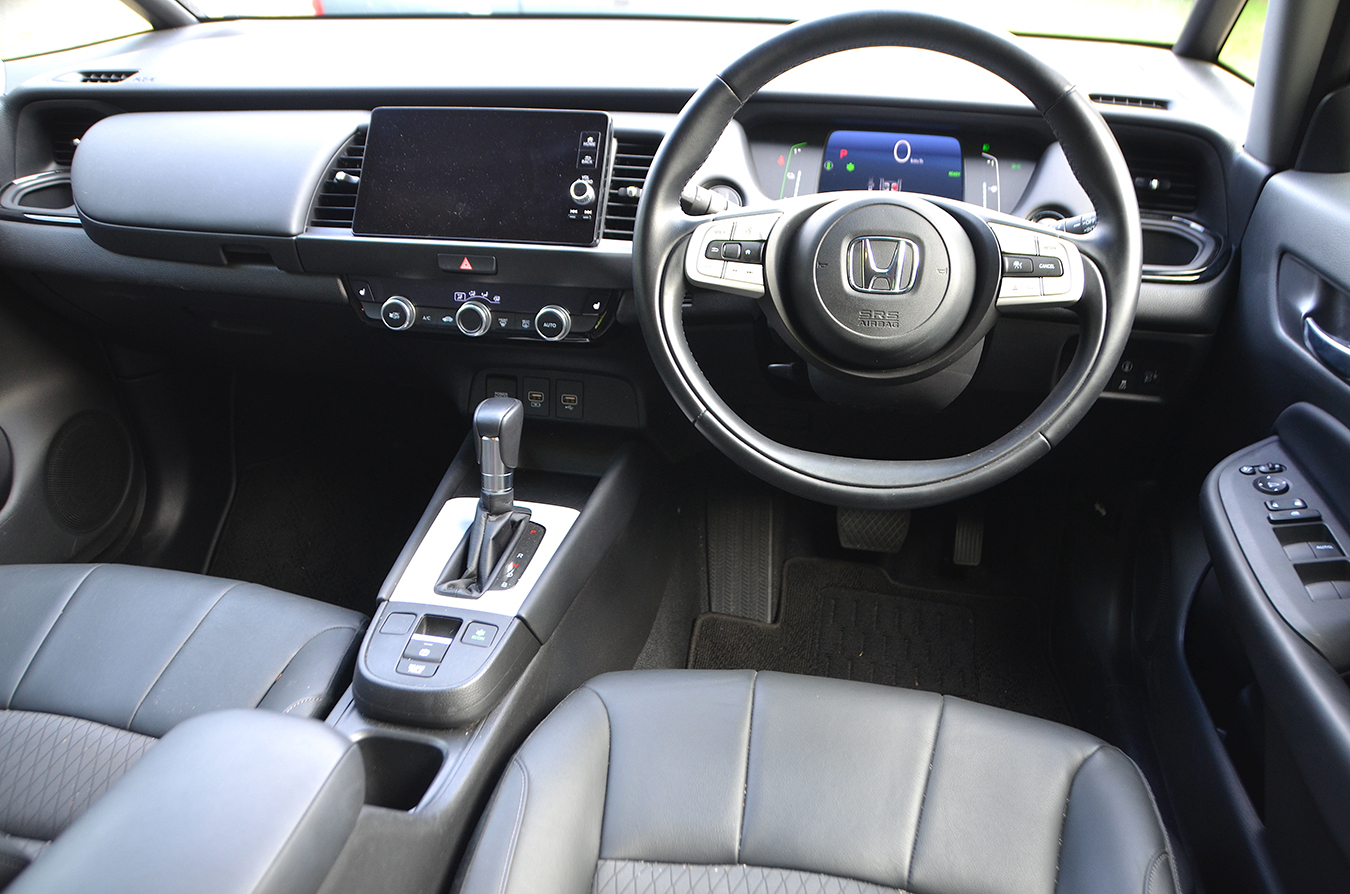How Does Honda’s Hybrid Stack Up Against Gas & Electric Rivals?

Hybrid Honda against gas fiat & electric golf reveals surprises, conundrums.
Electrified motoring is becoming an ever-bigger part of our motoring lives. But how effective are electric cars – and hybrids, especially in the price-sensitive entry parts of the market? Faced with that conundrum, we gathered a hatchback example of each genre to figure it out. Our oddball trio comprises the Honda Fit e-CVT Hybrid against the Fiat 500 Twin Air and the Volkswagen e-Golf.

Frugal, Premium State of the Art Gas Fiat
Some may say that our choice is a bit of a mismatch, but we think that it’s a decent representation. We chose the Fiat 500 because it’s still the coolest small car out there after all these years. Bar none. 500 is a premium entry level car that promises economy as much as it does style (above). Which is necessary in this context. Both the others are big on those aspects. So better we bring a competitive gas car along to this little street fight.
This slick latest-spec 500 is still for sale in many world markets. It has LED headlamps, neat bespoke 16-inch alloys and chrome accents. The Fit Hybrid, which is likewise available in most European and other markets, subscribes to Honda’s principle of the beauty in objects perfected over time. ‘Fit’ for purpose, so to say, it’s a cool, compact monobox city car that cuts a chic pose with premium LED headlamps and a refined roof spoiler.
You cannot buy this Volkswagen e-Golf any longer either. This one’s a pilot model in some markets to help grow the electric vehicle brand ahead of VW’s full battery ID range going on sale. The e-Golf thankfully lacks the idiotic styling that’s become the electric car norm. In other words, it doesn’t wear a daft electric party hat to make everyone inside look like a fool. It’s rather just a regular VW Golf. We like that!

All Three Have All the Luxuries
Moving inside, the Fiat’s diamond stitched leather pews are a treat. There’s a dinky infotainment touchscreen with DAB Radio, Apple, Android and Bluetooth tech and voice recognition too. 500 has 50/50 split and folding rear seat to expand its functional triangular boot’s surprisingly large, wide floor. Well stacked, 500 packs seven airbags, ABS braking, stability control, a hill-holder, and a speed limiter too. Add optional TomTom 3D map HD Navigation.
Austere, practical, and functional, the clever and uncluttered Honda’s durable soft-touch finishes highlight an inherent quality (above). Comfy seats get better lumbar support and central armrest height-aligned with the door rest. It has an easy-to-read TFT dash and smartphone-style 9-inch HMI Auto and CarPlay central touchscreen infotainment. Which happily also features buttons and knobs. Fit has class leading rear legroom. A broad tailgate accesses a flat 10.9 cu-ft trunk that expands to 42.7 cubes via a handy rear Magic Seat.
The Volkswagen e benefits the last generation Golf cabin (below) – and all its practicality in toto. Besides new electric tabs in the familiar touchscreen, there’s nothing to suggest you’re driving an electric Golf. We prefer this beautifully finished older school, and more user-friendly dash to the step too far Golf 8 solution. The electric car also carries the Golf 7’s superb interior quality, all the necessary infotainment, and the rest across.

Different Strokes for Different Folks
On the road, Fiat may have recently stolen the 500’s sixth gear, but that makes little difference with all that TwinAir grunt. The splendid state-of-the-art 85 HP 106 lb.-ft 875cc turbo gas twin pays homage to the original 1960s two-pot. TwinAir is a splendid and torquey little engine with a wonderful, classic twin cylinder burble.
The Fit Hybrid introduces Honda’s lightweight, compact and efficient e:HEV two-motor powertrain. A lithium-ion battery powers a pair of compact, powerful electric motors. They work together with a 1.5-litre DOHC i-VTEC gas engine via an innovative CVT transmission. It seamlessly switches between three electric EV, mixed Hybrid, or gas Engine drive modes to power the front wheels.
The Fit Hybrid uses both engine and regenerative braking to recharge the battery via a separate e-motor generator. Producing a total of 107 HP and 186 lb.-ft, its biggest party trick is how it maximizes the strengths of its driving modes. To ensure optimal urban driving efficiency, the electric motor uses free battery energy to pull away and accelerate. Areas where the gas engine uses the most fuel. Conversely, the electric motor is less efficient at higher speeds, where the gasoline4 engine is at its best.
